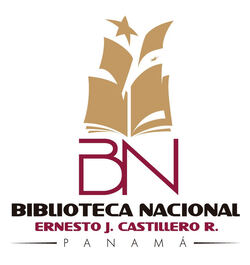The content of the publications and the links suggested in them are the sole responsibility of the authors and not of the Metropolitan University of Education, Science and Technology (UMECIT) or of the journal ORATORES. They are protected by international copyright laws as well as the logos of UMECIT AND ORATORES, hence their reproduction is totally prohibited.
This work is licensed under a Creative Commons Attribution-NonCommercial-NoDerivatives 4.0 International License.
The authors maintain the copyright and transfer the right of the first publication to the journal, with the article registered with Creative Commons Attribution-NonCommercial-NoDerivatives License, which allow others They can download the works published in this magazine and share them with other people, as long as their authorship is recognized, but they cannot be changed in any way nor can they be used commercially.
Authors are recommended to include their work in social networks such as Researchgate and institutional repositories once the article or visible fact has been published on the journal page, without forgetting to include the digital document identifier and the name of the journal.



Abstract
The Order Orthoptera includes crickets, locusts, and grasshoppers, of which the Family Tettigoniidae is characterized by having species that blend in with their environment by simulating branches, leaves, or other plant structures. In Volcán, Tierras Altas district, Chiriquí, Panama, an insect with thorns and slimy green color was found in a residence, so the aim of the study was to identify this species and update its known distribution range in the country. For this, the specimen was collected and kept alive for observation in a plastic container with ventilation. Specialized literature was consulted and specimens from the reference collection of the Museo de Invertebrados G. B. Fairchild, Universidad de Panama (MIUP) were reviewed; in addition to verifying records of previous samples. According to the results, the species corresponds to Markia hystrix (Westwood, 1844) (Orthoptera: Tettigoniidae: Phaneropterinae); this being a new report for the Chiriquí province, since in the revised material of the MIUP, there are specimens obtained from Santa Clara – Renacimiento and in the Fortuna Forest Reserve – Gualaca. The insect has also been previously found in other regions of the country, such as the Palo Seco Protected Forest – Ngäbe-Buglé Comarca, El Copé and Cerro Turega – Coclé, Campana –Panamá Oeste and Cerro Azul – Panama; being frequent to find it at altitudes between 300 and 1800 m asl. Due to its peculiar appearance, it blends in with the lichen Usnea hirta (L.) Weber ex F.H. Wigg. (Lecanorales: Parmeliaceae) that grow on the bark of trees, which is why it is commonly called the lichen grasshopper. In conclusion, the insect found in Volcán corresponds to Markia hystrix and the known distribution range for Panama is medium and high elevations located in the provinces of Panama, Panama Oeste, Coclé, Chiriquí and Ngäbe-Buglé Comarca.
Keywords
References
Atencio-Valdespino, R., Collantes-González, R., Caballero-Espinosa, M., Hernández-Aparcedo, P. y Vaña-Herrera, M. (2023). Impacto de los insectos en la seguridad alimentaria en Panamá. Ciencia Agropecuaria, (36), 139-165. http://www.revistacienciaagropecuaria.ac.pa/index.php/ciencia-agropecuaria/article/view/609
Cadena-Castañeda, O. (2011). La Tribu Dysoniini Parte I: El Complejo Dysonia (Orthoptera: Tettigoniidae) Y Su Nueva Organización Taxonómica. Journal of Orthoptera Research, 20(1),51-60. https://doi.org/10.1665/034.020.0105
Cadena-Castañeda, O. (2013). The tribe Dysoniini part II: The genus Markia (Orthoptera: Tettigoniidae; Phaneropterinae), new species and some clarifications. Zootaxa, 3599(6), 501-518. http://dx.doi.org/10.11646/zootaxa.3599.6.1
Carvajal, V. (2020). Los Tettigoniidae y sus extraordinarias formas. Escuela Politécnica Nacional, Escuela de Biología – Quito, Ecuador. https://bibdigital.epn.edu.ec/bitstream/15000/21190/4/Los%20Tettigoniidae%20y%20sus%20extraordinarias%20formas%203.pdf
Collantes, R. (2020). Taeniopoda varipennis Rehn (Orthoptera: Acridoidea: Romaleidae) asociado a áreas urbanas en la ciudad de David, Chiriquí, Panamá. Revista Investigaciones Agropecuarias, 3(1), 1-11. https://doi.org/10.48204/j.ia.v3n1a1
Collantes, R., Jerkovic, M., Atencio, R., Hernández, P. y Vaña, M. (2022). Percepción de la entomofagia como alternativa alimenticia saludable en Panamá. Revista Peruana de Ciencias de la Salud, 4(3), e384. http://dx.doi.org/10.37711/rpcs.2022.4.3.384
Collantes, R., Pittí, J., Jerkovic, M. y Atencio, R. (2021). Frutas con potencial como alimentos funcionales en Cerro Punta, Chiriquí, Panamá. Revista Semilla del Este, 2(1), 1-11. https://revistas.up.ac.pa/index.php/semilla_este/article/view/2460#:~:text=Las%20zarzas%20silvestres%2C%20el%20tomate,de%20mermeladas%2C%20bebidas%20y%20postres.
Collantes-González, R., Santos-Murgas, A., Atencio-Valdespino, R., Barba-Alvarado, A., Lezcano, J., Suira, J. y Guerra-Samudio, J. (en prensa). Tropidacris cristata (L., 1758) (Orthoptera: Romaleidae): ampliación del rango de distribución en Panamá. Revista Investigación Agraria, 5(1).
De Gracia, L. y Santos-Murgas, A. (2020). Observaciones biológicas y conductuales de algunos saltamontes (Orthoptera: Acridoidea) de Panamá. Tecnociencia, 23(1), 364–384. https://doi.org/10.48204/j.tecno.v23n1a20
Google Earth. (2023). Fotografía Satelital – Panamá. https://earth.google.com/web/@8.27621245,-80.36361045,31.10761468a,557833.04413699d,35y,-0.0000215h,0.12010417t,0.00000001r/data=MikKJwolCiExVFkwM1BsV3E5N0RYT2xSalRKcW1jdk1mWjhBRzE2S0UgAQ
Herrera, R., Collantes, R., Caballero, M. y Pittí, J. (2021). Caracterización de fincas hortícolas en Cerro
Punta, Chiriquí, Panamá. Revista de Investigaciones Altoandinas, 23(4), 200-209. https://doi.org/10.18271/ria.2021.329
Hofstede, H., Voigt-Heucke, S., Lang, A., Römer, H., Page, R., Faure, P. y Dechmann, D. (2017). Revisiting adaptations of neotropical katydids (Orthoptera: Tettigoniidae) to gleaning bat predation. Neotropical Biodiversity, 3(1), 41-49. http://dx.doi.org/10.1080/23766808.2016.1272314
Nickle, D. A. (1992). Katydids of Panama (Orthoptera: Tettigoniidae). En D. Quintero y A. Aiello (eds.), Insects of Panama and Mesoamerica: Selected Studies, [pp. 142–184].
OIRSA (Organismo Internacional Regional de Sanidad Agropecuaria). (2021). Alerta Fitosanitaria Regional ante presencia de Langosta Centroamericana en el sur de México y norte de Guatemala. Dirección Regional de Sanidad Vegetal, OIRSA. https://www.oirsa.org/contenido/2020-2/2021/3ra%20alerta%20Langosta%20Voladora%2012.01.21.pdf
Quintero, K., Concepción, J. y Espinoza, V. (2017). La agricultura orgánica en tierras altas, Chiriquí: realidad o percepción de la agricultura panameña. Revista de Iniciación Científica, 3, 13-15. https://revistas.utp.ac.pa/index.php/ric/article/view/1448
Rowell, C. (2013). The Grasshoppers (Caelifera) of Costa Rica and Panama. The Orthopterists’ Society. 612 pp. http://hdl.handle.net/11606/453
STRI (Smithsonian Tropical Research Institute). (2023a). Markia hystrix. Panama Biota. https://stricollections.org/stri/taxa/index.php?tid=50998&taxauthid=1&clid=0
STRI. (2023b). Usnea hirta (L.) Weber ex F.H. Wigg. Panama Biota. https://stricollections.org/stri/taxa/index.php?tid=183279&taxauthid=1&clid=0
Uribe, E. (2015). El cambio climático y sus efectos en la biodiversidad en América Latina. Documento de Proyecto, CEPAL – Santiago, Chile. 84 p. https://repositorio.cepal.org/bitstream/handle/11362/39855/S1501295_en.pdf?sequence=1
Downloads
Publication Facts
Reviewer profiles N/A
Author statements
- Academic society
- Universidad Metropolitana de Educación, Ciencia y Tecnología
- Publisher
- Universidad Metropolitana de Educación, Ciencia y Tecnología



















